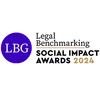A simple guide to marking your IP rights

In the UK, it isn’t compulsory to mark your products with details of your IP rights.
#
However, providing third parties with a constructive notice, alerting them of the existence of your rights, does have its advantages. In this simple guide to marking your IP rights, we take a look at some of the advantages and pitfalls in relation to product marking, and list the correct ways to mark your products, services and creations.
Patents and registered designs: why mark your product? #
- It acts as a deterrent to third parties interested in copying the product.
- Under UK law, an ‘innocent infringer’ will generally not be liable to pay damages in an infringement action against them if they are able to prove that they were not aware of the existence of the patent and had no reasonable grounds for supposing the patent existed.
- It puts all third parties (en masse) on notice of the existence of the patent or patent application.
Watch out for the pitfalls… #
The term ‘patent’ or ‘design’ without identification of the patent or design number is insufficient to establish that an alleged infringer should be considered to be aware of the existence of the right.
- UK Patent Law refers to the “application to a product”. Legal uncertainty remains surrounding the question of whether providing patent details indirectly (e.g. on packaging, in brochures or on the instructions for use) provides sufficient notice of the existence of a patent right.
- It is a criminal offence (which may lead to a summary conviction or a fine) for a person to falsely represent:
- that a product is patented or has a registered design (this includes if the right has expired, has lapsed, been abandoned or revoked)
- that there is a ‘patent pending’ or ‘design pending’ if no such application has been made, or is the application has been refused or withdrawn
How do I mark my product? #
There is no symbol that can be applied to a product to denote that it is patented or has a registered design. Instead, products can be directly marked (e.g. stamping, engraving, labelling) with either:
- the word ‘patent’, ‘patented’ or ‘registered design’ accompanied by the relevant number(s)
- an internet link that is accessible to the public free of charge and which clearly associates the product with the relevant patent or registered design number. The product must be clearly identified (e.g. by including any relevant model numbers and variants that exist. It’s worth noting that this does not apply to Registered Community Designs).
The UKIPO provides this example.
Caution must be exercised to ensure that the information is kept up-to-date and any change in the status of the patent or design is accurately reflected. Removing the need to mark the patent or registered design numbers directly on the product by using an internet link reduces the burdens and costs for businesses and individuals, and improves transparency for the public by providing easier access to current patent and registered design information in relation to a product.
Registered trademarks: reasons to mark your product/service #
Marking:
- provides notice of the owner’s claim to the mark
- may avoid descriptive use of the mark in advertising and labelling which could lead to ‘genericide’
- distinguishes the mark from surrounding text or graphics
- distinguishes the trade mark from another owner’s mark when the two appear together on products, packaging or promotional materials or in advertising
- directs the consumer to a notice that identifies the trade mark owner, thereby reinforcing the public’s association of the mark with the owner
- acts as a deterrent against unauthorised use
Watch out for the pitfalls… #
- Incorrectly indicating that a trade mark is registered is a criminal offence in the United Kingdom and punishable by a fine.
- Marks must be used in the form and in respect of the goods/services that the trade mark is registered.
How do I mark my product/service? #
The ® symbol can be used when a trade mark is registered. Conventionally, it’s placed on the right-hand side of the trade mark, superscripted, in a smaller type size than the mark itself.
The abbreviation RTM can also be used, but in practice rarely is, to show that the mark has been registered.
The ™ symbol can be used if the trade mark has not been registered to show that the mark is being used as a trade mark. In the UK, the use of ™ has no legal meaning. The ™ symbol is conventionally placed on the right-hand side of the trade mark, superscripted, in a smaller type size that the mark itself.
As trade mark registrations are protected by territory, we recommend using the ™ symbol on products or their packaging, if the product may be sold in territories where the trade mark is not registered. This avoids the need to have multiple packaging designs for different territories. It is also advisable to use the ™ symbol on the internet, particularly if you operate a website from a gTLD, as this is a means of advertising globally.
By using an asterisk (*) or similar symbol to direct the consumer to a footnote indicating that the mark is registered or “is a trade mark [service mark] of [company name].”
Copyright: why mark your creation? #
Copyright is an automatic right. You do not need to apply to register it in the United Kingdom.
You automatically get copyright protection when you create, amongst other things:
- original literary, dramatic, musical and artistic work, including illustration and photography
- original non-literary written work, such as software, web content and databases
- sound and music recordings
- film and television recordings
- broadcasts
- the layout of published editions
Whether or not you mark your work with a symbol denoting the existence of copyright in the work, the level of protection you have against infringement is not affected. A benefit of using the copyright symbol is that it provides a reminder that copyright exists in a work. It also identifies the copyright owner and the year of publication, so that people know who to contact if they want to request permission to use the work.
How do I mark my creation? #
© is the normal copyright symbol and can be applied to most types of work. The ‘P’ copyright symbol is the internationally recognised symbol of protection in a sound recording. It is often found on CDs or on record sleeves.
The full copyright notice consists of three elements in the following order:
- symbol
- date of first publication
- name of the first owner.
Watch out for the pitfalls… #
You can incorrectly display the symbols when they are used in combination. Never combine the two notices, as this may invalidate them — place both separately, on two different lines.
For more information, contact us.




















